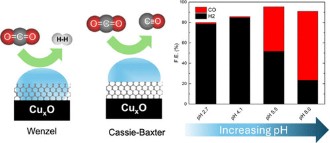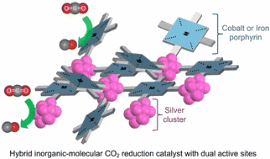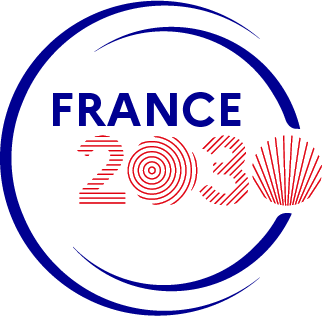
12 | 06 | 2024
The “InterMat” international chair has used artificial photosynthesis to create molecules of industrial interest from CO2
The InterMat (“Interface Matters”) chair held by Emilio Palomares, Director of the Chemical Research Institute of Catalonia (ICIQ) in Spain, and coordinated at UPPA by Laurent Billon, professor at the Institute of Analytical Sciences and Physico-Chemistry for Environment and Materials (IPREM, CNRS/UPPA), came to an end in 2024 after 5 years of activity. The results are most promising, especially for transfer to the industrial sector.
This international chair of the E2S (Solutions for Energy and the Environment) I-SITE has demonstrated that artificial photosynthesis can create, from carbon dioxide (CO2), molecules such as carbon monoxide, formic acid, methanol, ethanol, methane, ethylene... which can be used industrially to manufacture cosmetics and detergents, instead of molecules usually produced by petrochemicals.
Entitled “Interface Matters in Solution Processed Inorganic Organic Thin Film Solar Cells for Bio-inspired Solar Fuels Generation”, the Chair studied materials capable of creating the molecules of interest (catalysts), and sought to develop devices capable of operating with these catalysts.
It has resulted in 8 scientific publications and two patents, including one on a device for controlling the chemical reaction under industrial conditions.
Selectivity of a Copper Oxide CO2 Reduction Electrocatalyst Shifted by a Bioinspired pH-Sensitive Polymer (ACS Applied Matererials and Interfaces 2024, 16, 34, 45038–45048)
Porphyrin-silver acetylide cluster catalysts with dual active sites for the electrochemical reduction of CO2 (Chemical Communications 2024)
Artificial photosynthesis, a new reference activity for IPREM
E2S funding has enabled a professional relationship to be established between the Chemical Research Institute of Catalonia and IPREM, and to be perpetuated through the submission of several European projects. This cooperation has laid the foundations for new projects within IPREM, such as the interdisciplinary hub “Energy Sustainable and Independent Territories”, making artificial photosynthesis a new IPREM activity.
External researchers come here for advanced training or to test their materials in order to study the possibilities of creating green hydrogen from their materials, or reducing CO2.


